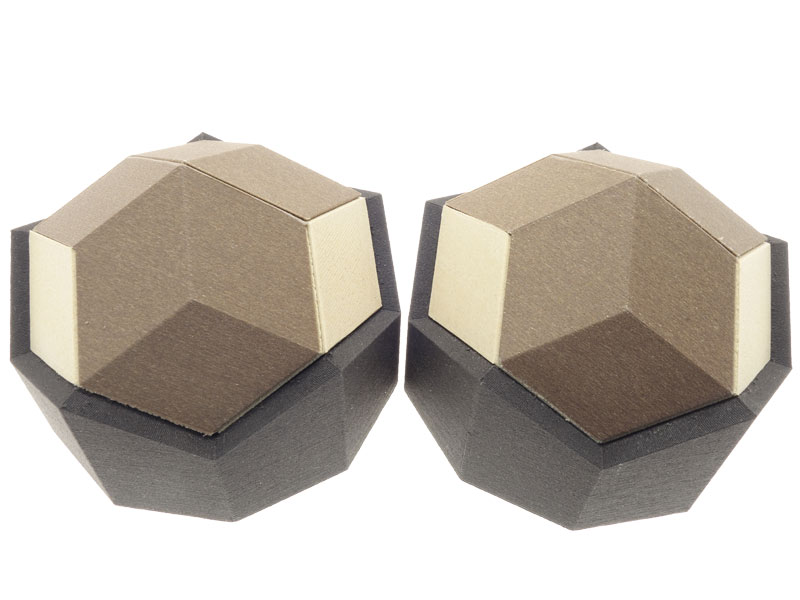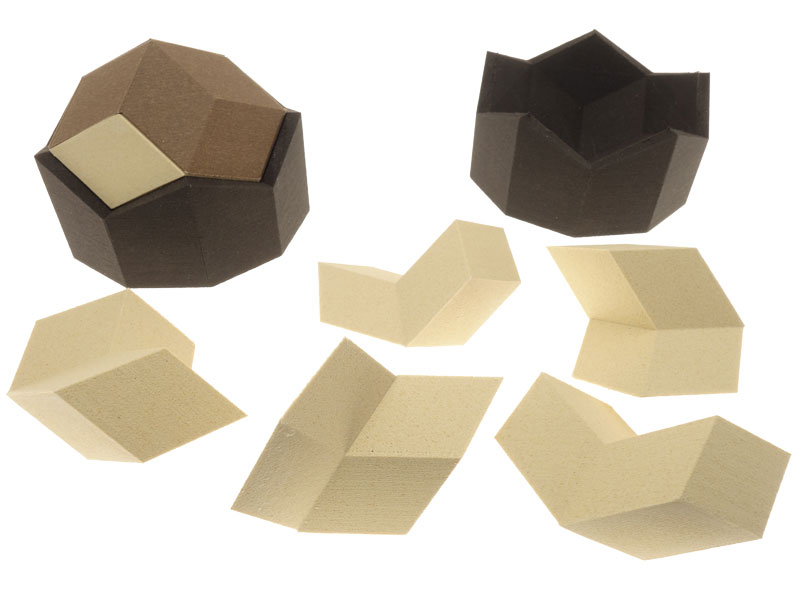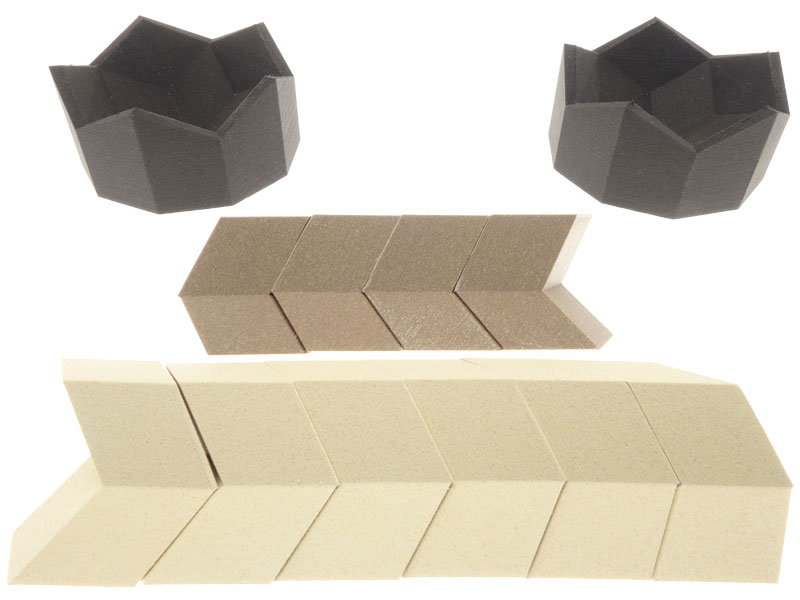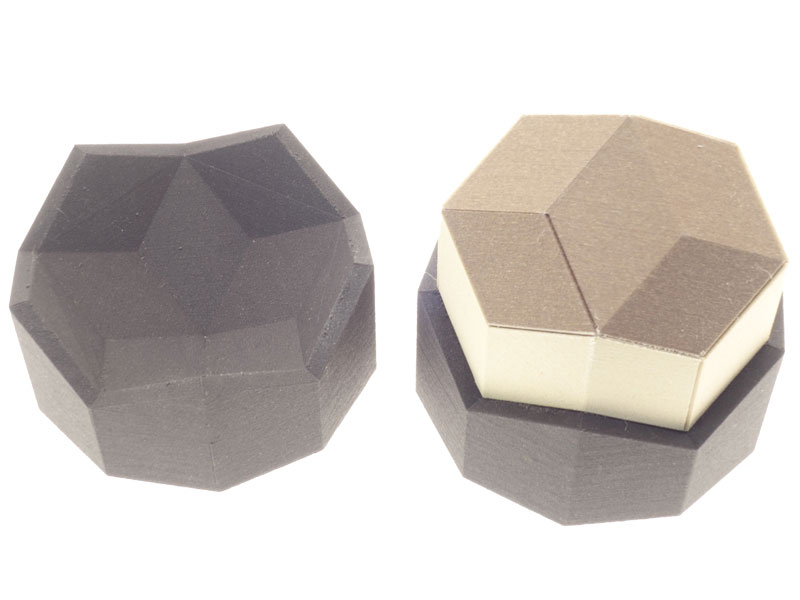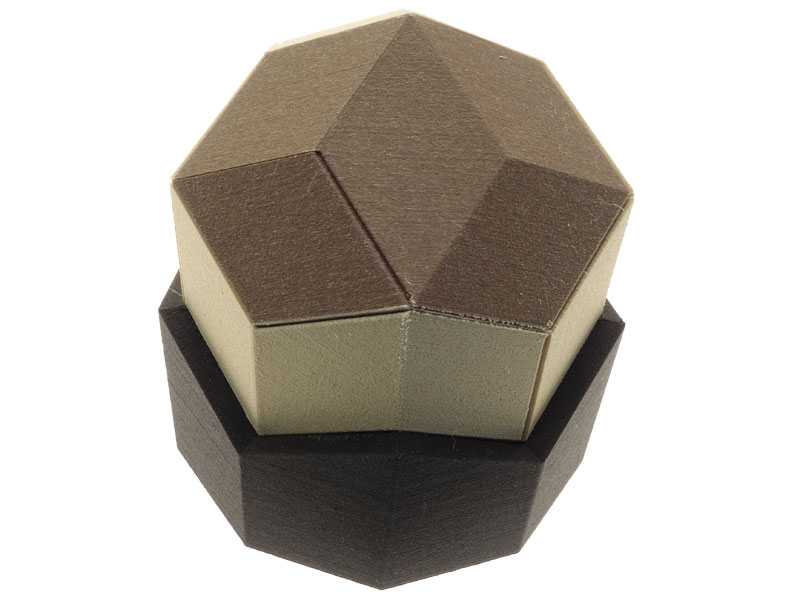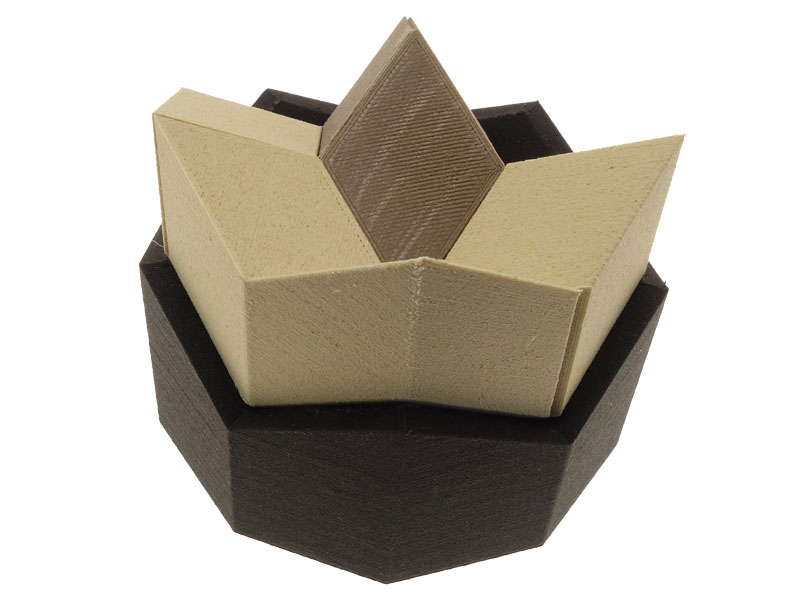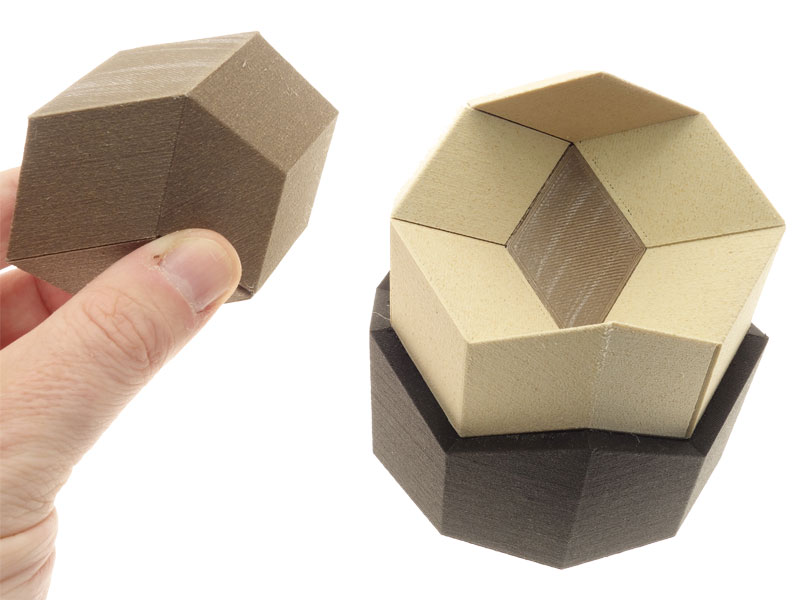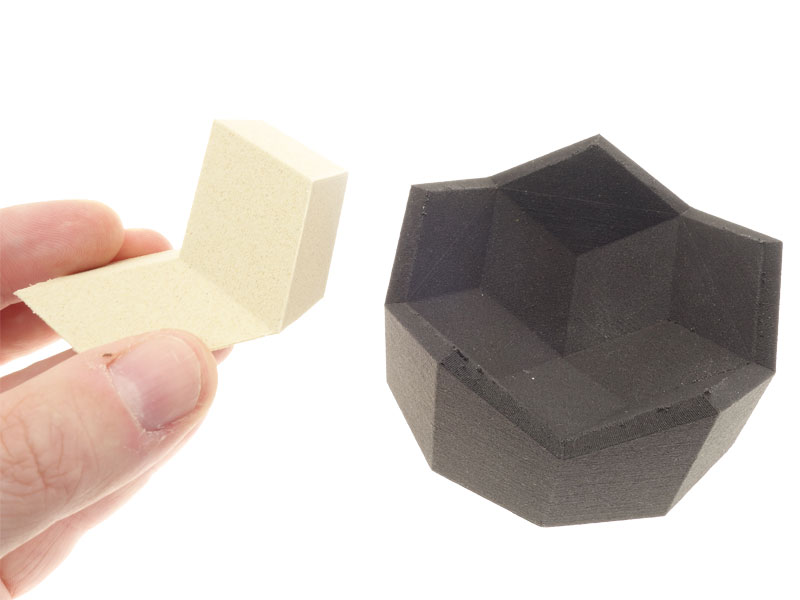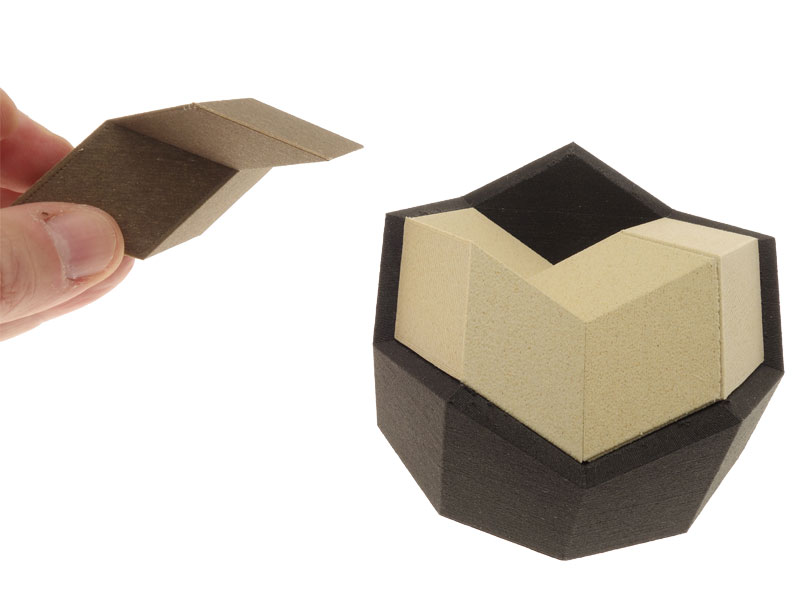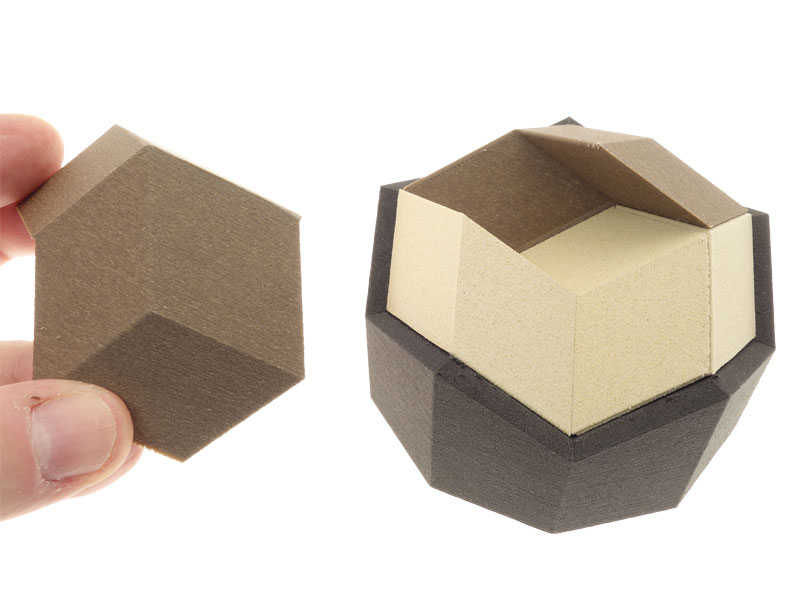Hi iMaterialise fans,
Hanegraaf Paradox is an invention by Anton Hanegraaf in the 1990’s. He presented a rhombic triacontahedron, made of ten parts. Each part was a sharp and an obtuse rhomboid glued together. Anton threw all parts on the table, and then he showed how one could build two rhombic icosahedra from these parts. Then he threw the two apart, built up one of the two and then he challenged an observing victim to solve the other. The victim would obviously fail.
More than 20 years later, I managed to recreate Anton’s puzzle from memory and some analysis help by George Bell. Any combination of #L+#R=10 can be used to build the rhombic triacontahedron: 10+0, 9+1, 8+2, 7+3, 6+4, 5+5, 4+6, 3+7, 2+8, 1+9, 0+10. However, a rhombic icosahedron can only be build from 1+4, 2+3, 3+2, 4+1. The puzzle is impossible with five the same pieces, i.e. 5L or 5R.
Anton’s rhombic triacontahedron is built from 6L+4R. When Anton built two rhombic icosahedra, he made two identical ones using 3L+2R. When involving the victim, he build one rhombic icosahedron with 1L+4R. The victim is then left with 5L+0R, which is impossible to build into a rhombic icosahedron.
The puzzle samples on the photos are made of “3D-printed wood”, a special plastic material with wood grains.
Watch the YouTube video.
Download the CAD file to print-it-yourself.
Buy the puzzle at my iMaterialise Shop.
Read more at the Non-Twisty Puzzles Forum.
Check out the photos below.
Enjoy!
Oskar
